PARIS (AP) – Paris hosted an extra-special guest for France’s national holiday Sunday – the Olympic flame lighting up the city’s grandiose military parade for Bastille Day.
Just 12 days before the French capital hosts exceptionally ambitious and high-security Summer Games, the torch relay joined up with thousands of soldiers, sailors, rescuers and medics marching in Paris beneath roaring fighter jets.
While people around France mark the day with concerts, parties and fireworks, here’s a look at what the holiday’s about, and what’s different this year.
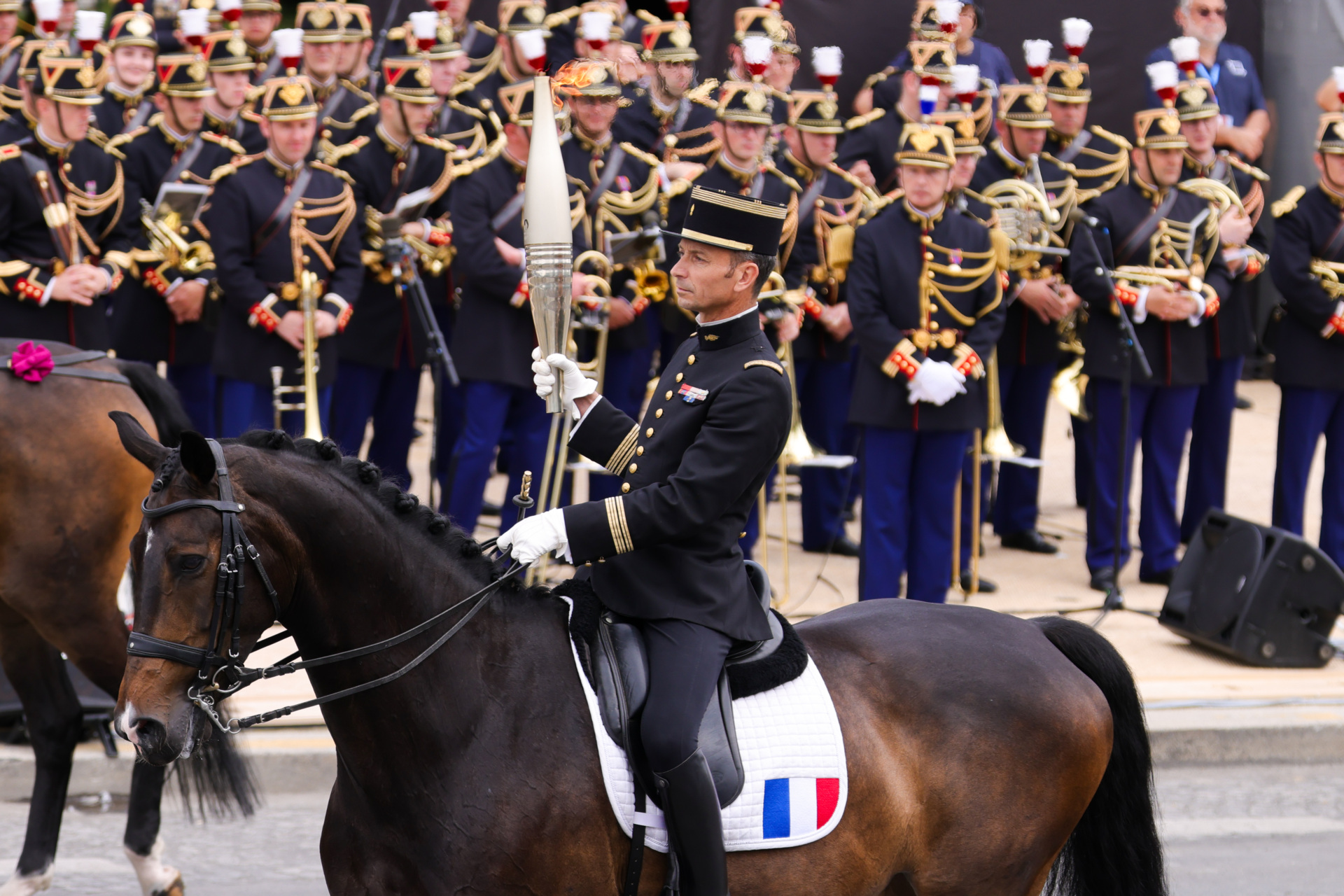
PARIS, FRANCE – JULY 14: Thibaut Valette is seen holding The Paris 2024 Olympic flame during the Bastille Day military parade as the Olympic Torch Relay arrives in Paris, on July 14, 2024 in Paris, France. Photo by Pierre Suu/Getty Images)
On July 14, 1789, revolutionaries stormed the Bastille fortress and prison in Paris, heralding the start of the French Revolution and the end of the monarchy.
The holiday is central to the French calendar, with events across the country. It aims to embody the national motto of “liberty, equality and fraternity,” though not everyone in France feels the country lives up to that promise.

Special French military school of Saint-Cyr march past during the Bastille Day military parade along the Avenue Foch in Paris on July 14, 2024. (Photo by Ludovic MARIN / AFP) (Photo by LUDOVIC MARIN/AFP via Getty Images)
The Paris parade is the holiday’s highlight. This year, it paid tribute to those who freed France from Nazi occupation 80 years ago, with a re-enactment of the D-Day landings of June 6, 1944, and a presentation by service members from the 31 countries whose troops contributed to the liberation. About half are African nations that were under French colonial rule during World War II.
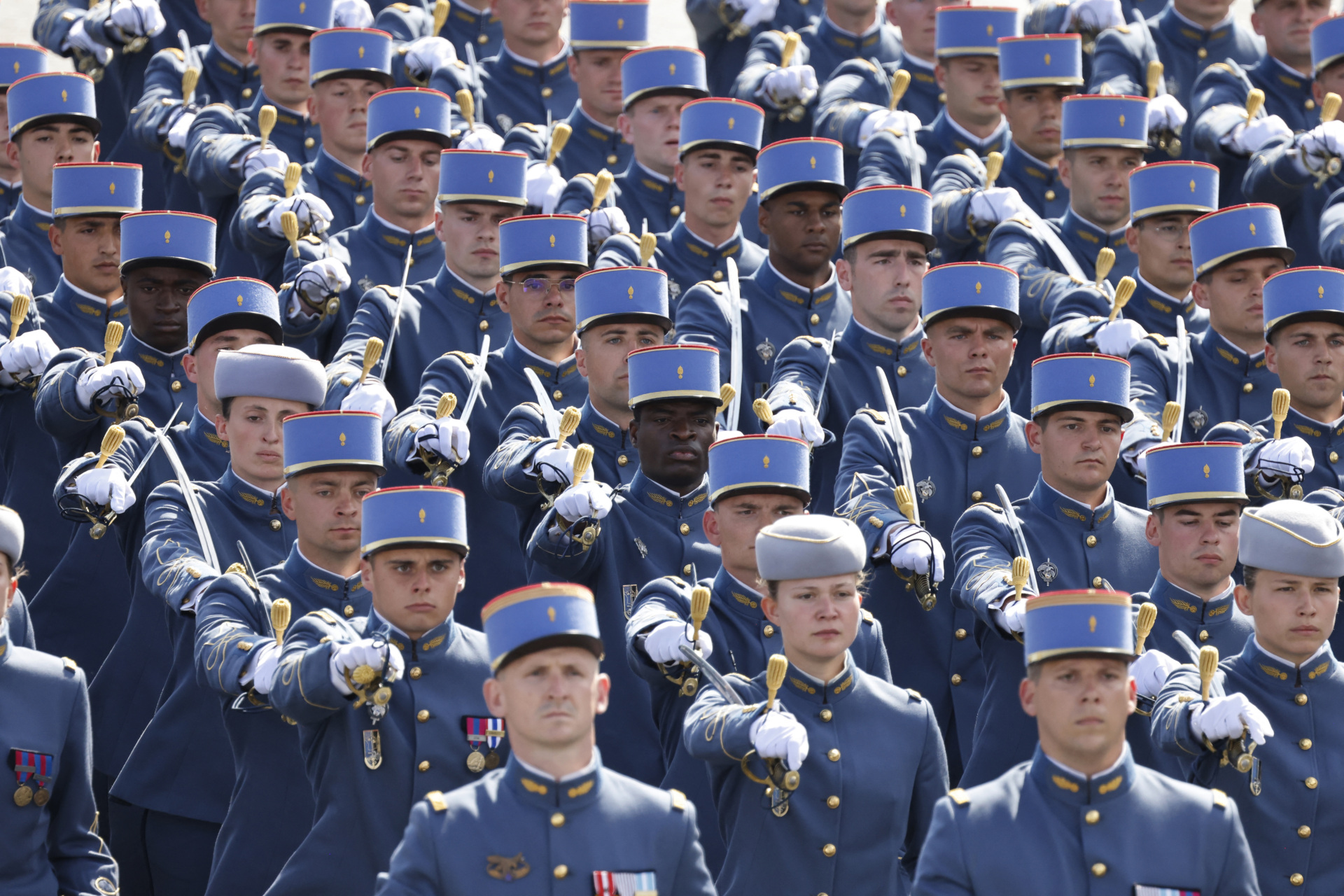
Members of the French Midshipmen’s military School of Coetquidan march past during the Bastille Day military parade along the Avenue Foch in Paris on July 14, 2024. (Photo by Ludovic MARIN / AFP) (Photo by LUDOVIC MARIN/AFP via Getty Images)
Some 4,000 people and 162 horses marched in the tightly choreographed show, among them units that served in NATO missions in eastern Europe, against Islamic extremists in the Sahel, protecting French territories in the South Pacific and global shipping corridors. They were joined this year by three German officers from a cross-border brigade.

Pioneers of the French Legion Etrangere march past during the Bastille Day military parade along the Avenue Foch in Paris on July 14, 2024. (Photo by Ludovic MARIN / AFP) (Photo by LUDOVIC MARIN/AFP via Getty Images)
The ornamental uniforms are rich in symbolism – most notably those of the French Foreign Legion sappers, with long beards, leather aprons and axes from their original role as route-clearers for advancing armies.
Overhead, 65 aircraft flew in formations, including a British Typhoon fighter alongside French Mirages and Rafales, rescue helicopters and aircraft used in missions from Afghanistan to Mali or international drug busts.

TOPSHOT – French Air Force elite acrobatic flying team “Patrouille de France” (PAF) performs past the Arc de Triomphe during the Bastille Day military parade on the Avenue Foch, in Paris on July 14, 2024. (Photo by Ludovic MARIN / AFP) (Photo by LUDOVIC MARIN/AFP via Getty Images)
President Emmanuel Macron kicked Sunday’s events off with a review of the troops.
Military bands and choirs played an important role, performing a medley of French military songs, American jazz tunes, a Scottish bagpipe ballad – and the Marseillaise.
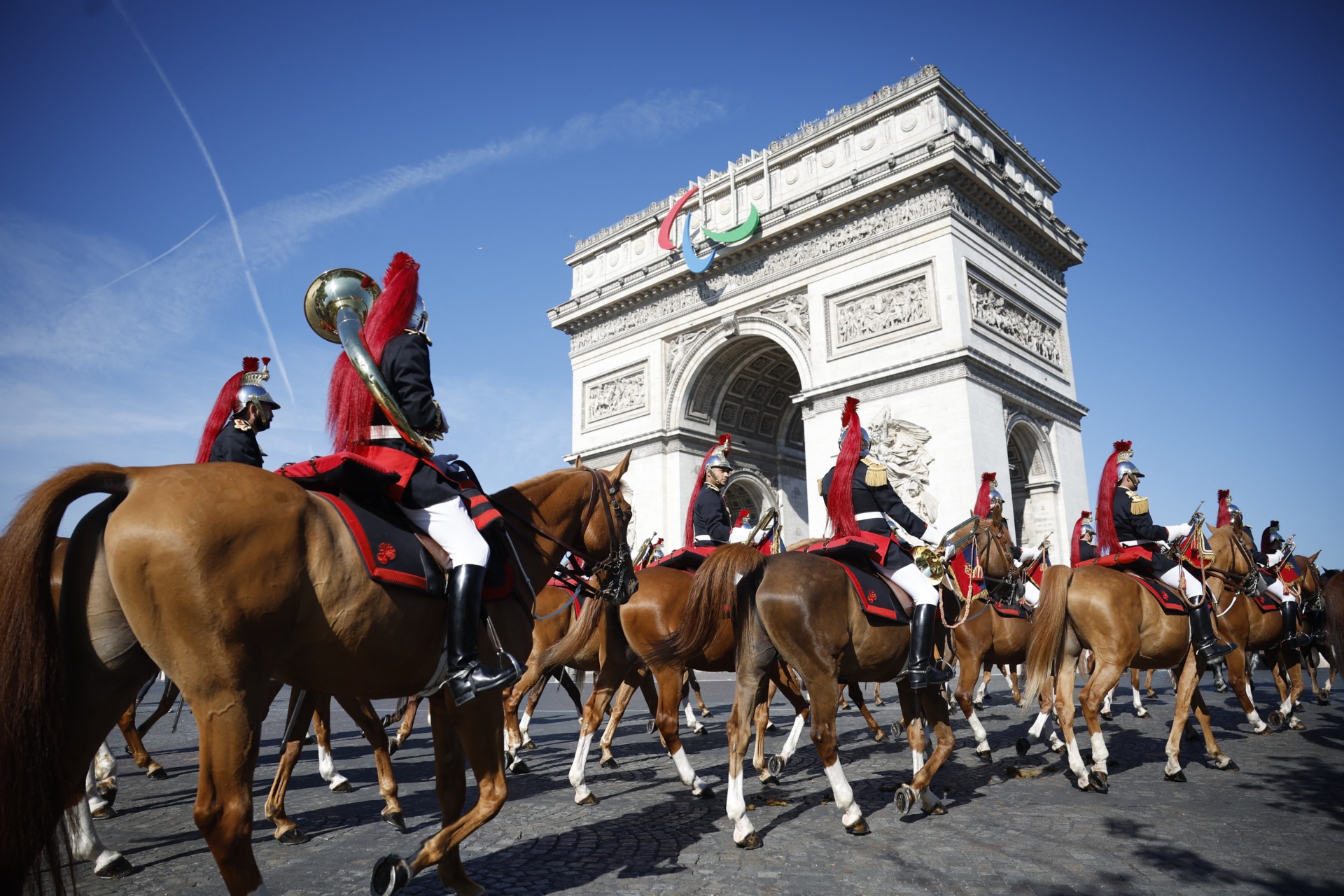
The cavalry Regiment of the French Republican Guard arrive to prepare for the Bastille Day military parade on the Avenue Foch, with the Arc de Triomphe in the background in Paris on July 14, 2024. (Photo by Yoan VALAT / POOL / AFP) (Photo by YOAN VALAT/POOL/AFP via Getty Images)
The numbers are scaled back compared with previous years, because of Olympics security measures. Around 130,000 police are deployed around France for the holiday weekend.
This year’s Bastille Day offered Macron a moment of distraction from the political turmoil he unleashed with snap elections that weakened his pro-business centrist party and his presidency.
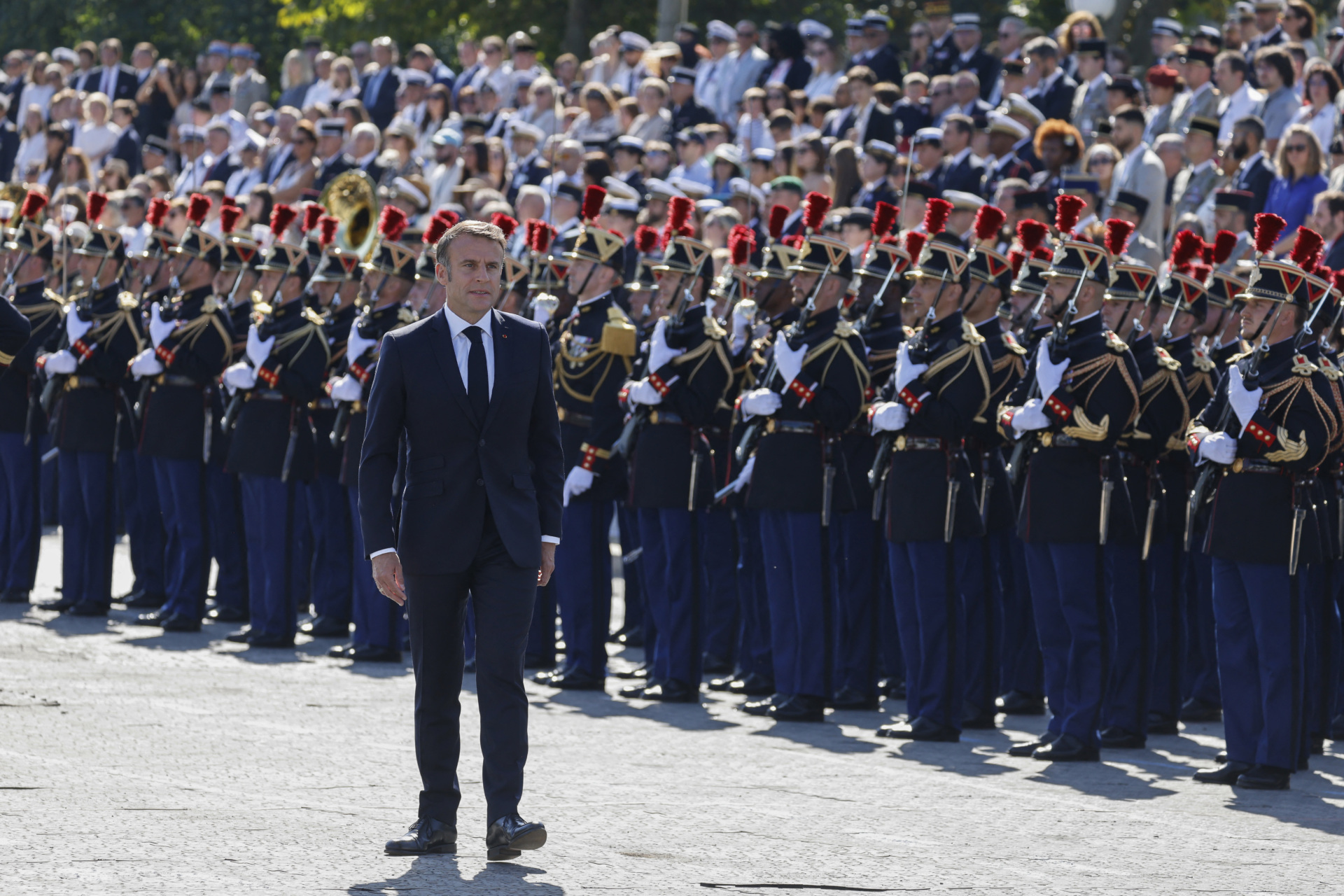
France’s President Emmanuel Macron (C) reviews the troops during the Bastille Day military parade on the Avenue Foch with the Arc de Triomphe in background, in Paris on July 14, 2024. (Photo by Ludovic MARIN / AFP) (Photo by LUDOVIC MARIN/AFP via Getty Images)
The result left a deadlocked parliament with no one clearly in charge. The prime minister could leave office within days, while the left-wing alliance that won the most seats is struggling to agree on a proposed replacement.
Meanwhile, Russia’s war in Ukraine is threatening Europe’s security. At a meeting with military leaders Saturday, Macron said France will keep up support for Ukraine and called for higher defense spending next year because of “approaching threats.”
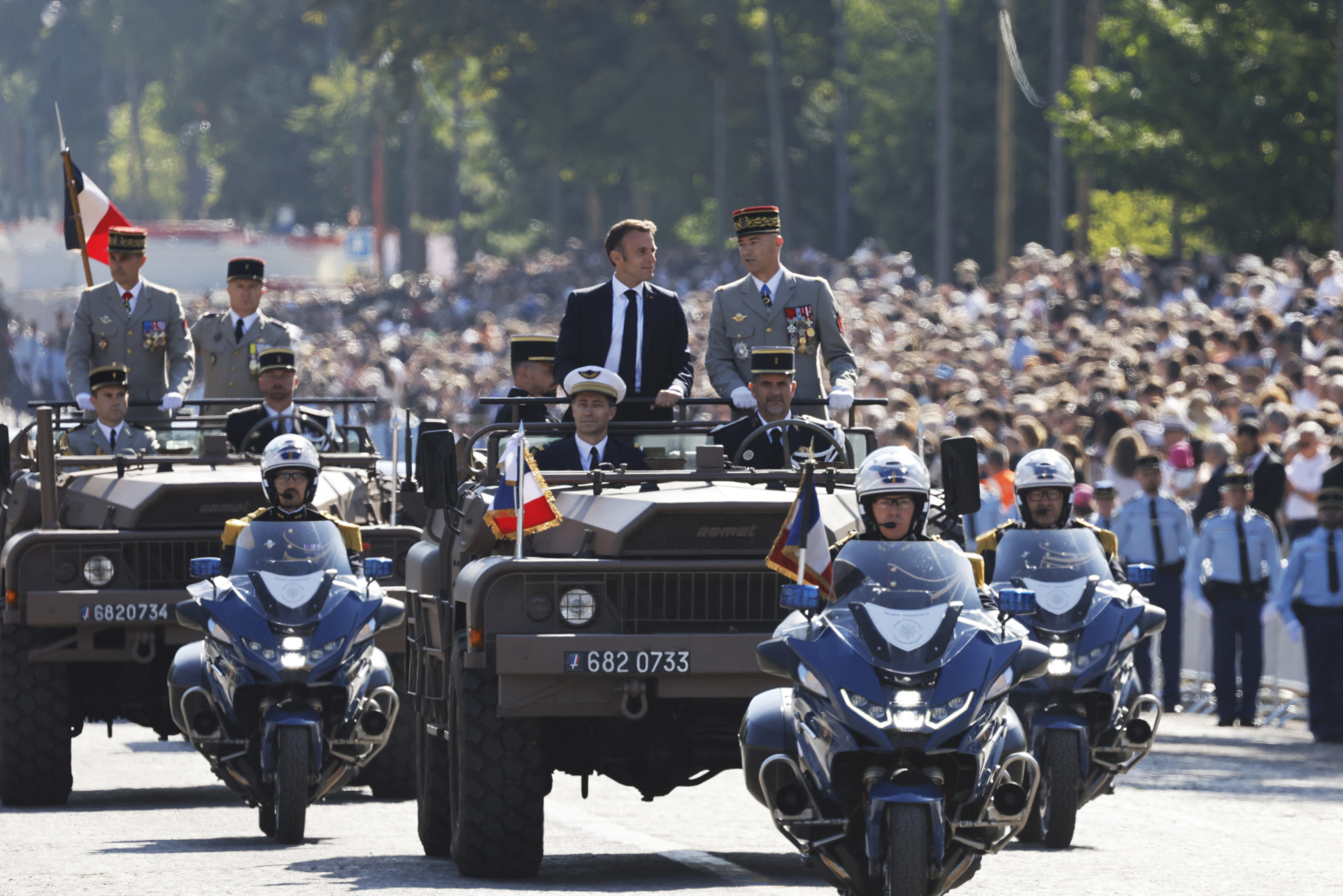
France’s President Emmanuel Macron (Top-L) stands in the command car flanked by Chief of Staff of the Armed Forces (CEMA), Thierry Burkhard (Top-R) during the Bastille Day military parade on the Avenue Foch, in Paris on July 14, 2024. (Photo by Ludovic MARIN / AFP) (Photo by LUDOVIC MARIN/AFP via Getty Images)
The Olympic torch relay reached Paris just in time.
The parade wrapped up with the arrival of the flame, escorted by riders on horseback, 25 torchbearers, and cadets dressed in the five Olympic colors forming the shapes of the five interlocking Olympic rings.
The first torchbearer was Col. Thibault Vallette, equestrian gold medalist in the 2016 Rio Olympics, who passed it on to a group of young athletes smiling broadly as they passed it hand-to-hand in front of the presidential tribune.
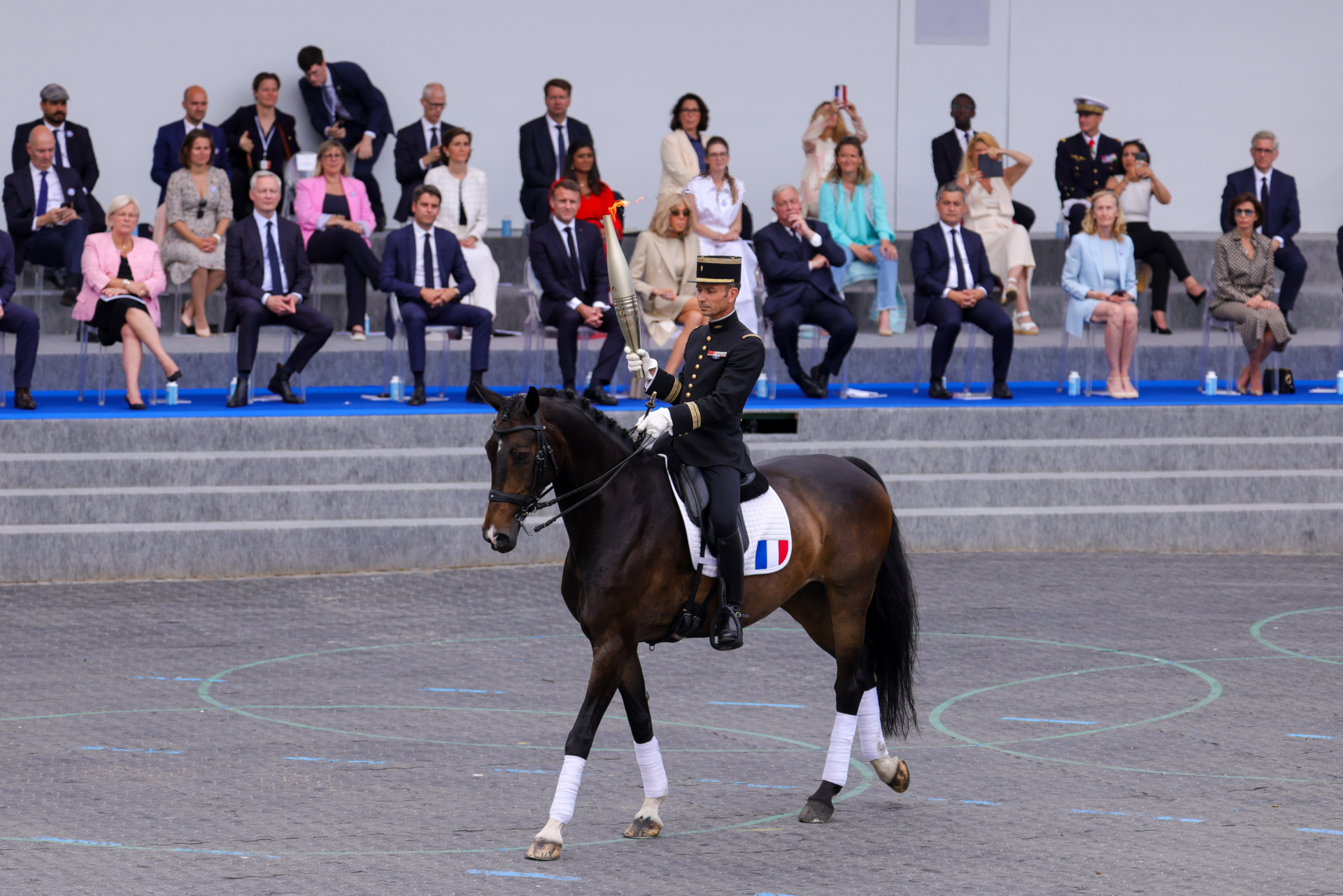
PARIS, FRANCE – JULY 14: Thibaut Valette is seen holding The Paris 2024 Olympic flame during the Bastille Day military parade as the Olympic Torch Relay arrives in Paris, on July 14, 2024 in Paris, France. (Photo by Pierre Suu/Getty Images)
Usually, the parade travels from the Napoleon-era Arc de Triomphe to the Concorde plaza, where France’s last king and queen were beheaded.
This year, Concorde has been transformed into a huge Olympic venue for breakdancing, skateboarding and BMX. So the parade route headed to the Bois de Boulogne park on the city’s edge instead.
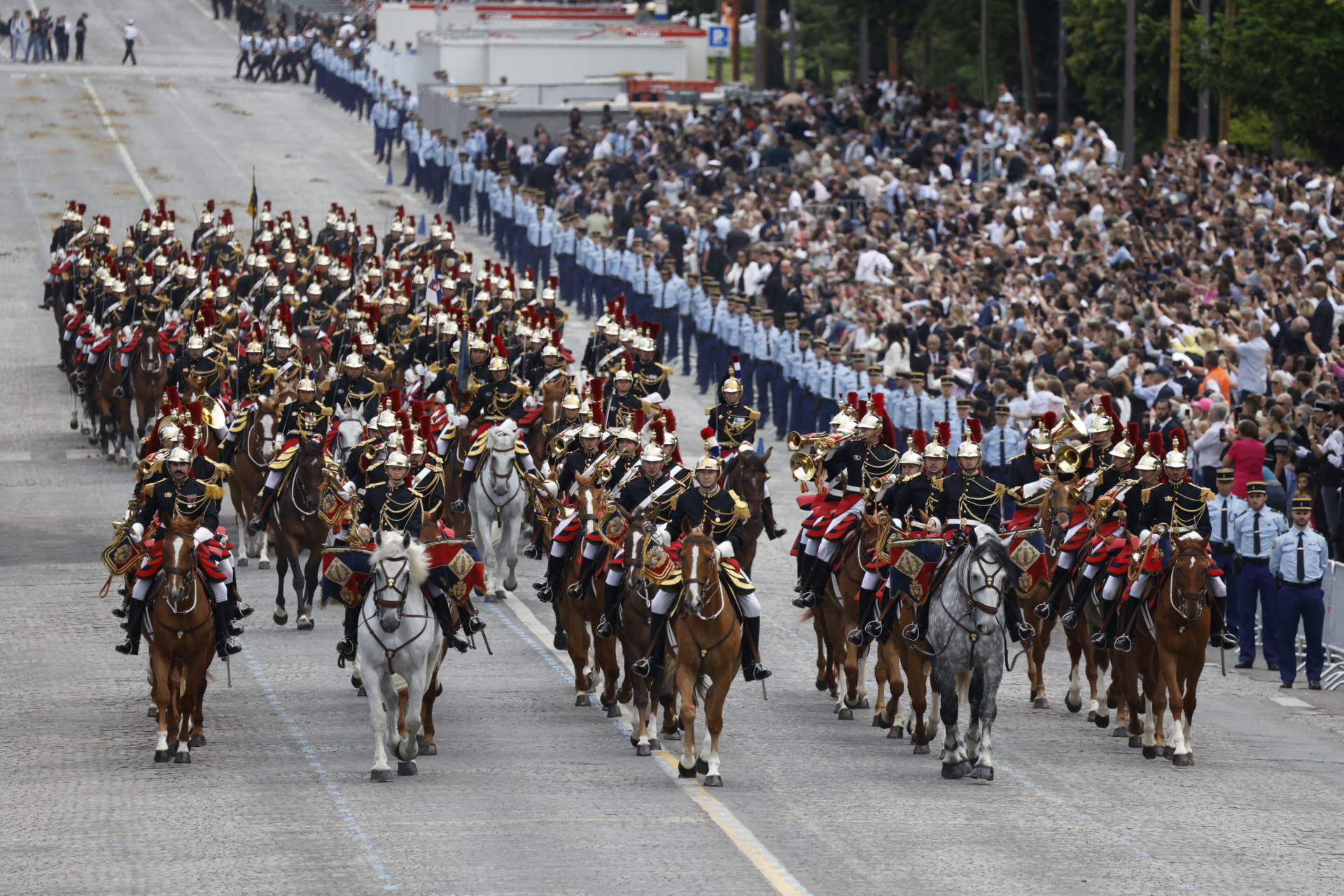
Cavalry Regiment of the French Republican Guard march past during the Bastille Day military parade along the Avenue Foch in Paris on July 14, 2024. (Photo by Ludovic MARIN / AFP) (Photo by LUDOVIC MARIN/AFP via Getty Images)
Olympic venue construction around the Eiffel Tower means spectators can’t gather beneath the monument to watch its annual fireworks show, either.
After its Bastille Day appearance, the torch relay will swing by Notre Dame Cathedral, the historic Sorbonne university and the Louvre Museum before heading to other Paris landmarks Monday.
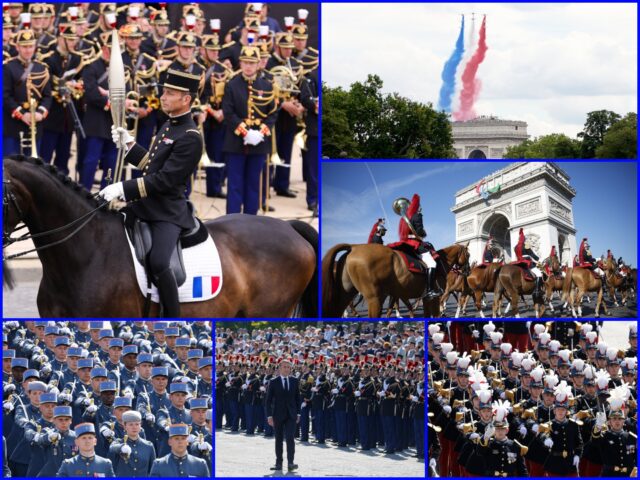
COMMENTS
Please let us know if you're having issues with commenting.